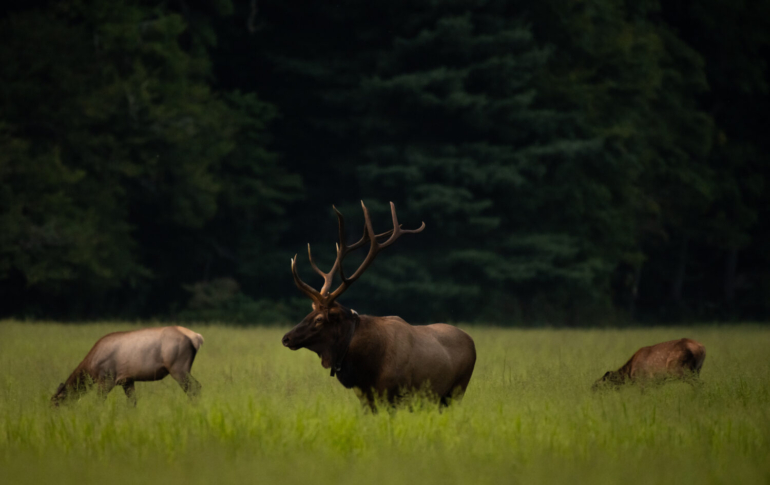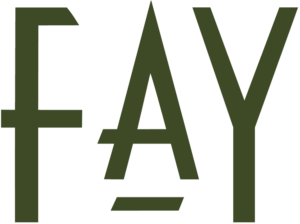Supporting Healthy Habitat and Spring Range Assessments
By Rob Grainger, Sales Agent, Republic Ranches, LLC
Spring is ordinarily the breath of fresh air that we yearn for once the hunting rigs are parked for the season, and we store our gear. After the last covey rises in late February, my mind switches gears to budding trees, strutting toms, quail pairing off, and bucks dropping their antlers. This is the time I begin another range assessment as “green-up” transforms the landscape into the postcards you see in most Texas truck stops. In the eco-region I monitor, we ordinarily see the first woody species budding out between February 25th and March 10th depending upon our rainfall amounts and the soil temperatures. Fast forward three weeks, and we are in a frenzy of vegetation growth. The forbs are beginning to blossom, warm-season grasses are putting on fresh, palatable blades, and the woody shrubs are adding nutritious leaves to their branches. At this point, it is easy to believe that you are all set for a banner year. But, we must look beyond the luscious landscape and compare what is in front of us versus what we know should be present. We should monitor range health often throughout the year, but I want to focus on how a spring assessment can help you make management decisions for the rest of the year. Whether you are involved in livestock production, wildlife management, or a combination of the two, effectively monitoring the health of your rangelands will allow you to make management decisions that will benefit your property year-round.
When assessing the health of the habitat on a property, we need to establish what it looked like at precisely the same time in prior years. This will help us identify what is happening to the landscape in response to the management practices we put in place and the climate’s impact over the past year. One of the common practices we often use is photo monitoring points. These are locations designated as sampling sites in which you take a photo from each of these locations on the same date each year. If you are recording rainfall and your stocking densities for the four-legged critters inhabiting your property, you will be able to understand whether you are properly stocked, overstocked, or if you could raise the stocking densities of the game and livestock. There are a plethora of items to look for in these photo points, but key ones are the presence of species diversity, problematic species encroachment, and the changes in browse and forage supply from year to year.
Species diversity on our rangelands is critical. We want to have a diverse forage or multi-species environment as opposed to a monoculture of one species, whether it is good or bad. For example, guayacan is a top-tier woody shrub in parts of South Texas, but it would not support a healthy whitetail population by itself because of their dietary needs. The same goes for quail and turkeys when we speak of the grasses and woody species that make up their habitat. These birds require roosting, nesting, and loafing cover to exist. No one species of grass will provide everything that a population needs to thrive. You need a good mix of the right grasses and brush species. Whatever game species you consider important to your property, you will need to manage for diversity. During the spring, review your photo points from years past to see if more mixed brush and grass species are establishing.
The encroachment of problematic species in Texas has become a constant battle. From the moment the first cedar, huisache, and mesquite made root in our landscape, the fight was on. Annually, ranches in Texas lay down millions of gallons of chemical mixtures to combat these harmful plants. The oil and gas industry is certainly not hurt by the amount of diesel put in bulldozers mechanically treating areas to remove unwanted vegetation. Of course, it is also essential to know what the unwanted species are, but the point is, these species will encroach and dominate our rangelands if allowed. But why do we consider them problematic species? A problematic species can be any plant species that can cause harm to an environment by dominating a landscape. In the case of range health, these species are typically less nutritious and take up space where other higher quality species could reside. During the spring green-up, these plants will be coming up as seedlings or putting on new growth, giving you the opportunity to identify them. It is beneficial from an economic standpoint to take action early. I once spoke with a man who has been treating undesirable encroaching species chemically for several decades here in the brush country. He explained that a one-year-old huisache or mesquite might cost you $.10 to spray and kill. If that plant reaches three years of age, it could cost you nearly $1.00 to have the same effect. Not to mention, a young woody plant will absorb the chemical and die much more easily than a more mature plant. Earlier spring detection of non-desirable encroaching species will also give you time to make a game plan for that season. We begin spraying deciduous brush species with foliar treatments when the soil temperature reaches 75 degrees, and the leaves are dark green. This typically occurs in April in South Texas. Make it a point to identify your non-desirable species when the leaves come on so that you can put a plan together to control the undesirable population.
As the browse species and grasses put on new growth, we can begin to make a judgment call on our carrying capacity. The general rule of thumb in cattle grazing regimes is “take half, leave half.” If you were grazing during the winter, you should be able to recognize what impact your livestock had on the range. You may have had good winter precipitation, giving you a leg up on the spring season. Adversely, starting with too little vegetation could have a great impact on the fawning and quail nesting cover that you will want later in the spring and summer. Fawning and nesting cover is a critical attribute the habitats must-have for the proliferation and success of the fawns and the nests to hatch the chicks. It also protects from predators and thermal cover during the hot periods. Try to use the early spring as a time to make decisions on your grazing plan for the benefit of your livestock herds and for the game species that call it home as well.
When we speak of browse and forage supply in rangeland systems, we are referring to the total weight of the vegetation coming from a specific sampling point, which is ordinarily measured in pounds/acre. The amount and type of vegetation that is on a specific site will help us determine the carrying capacity. Life would be quite simple if we could predict rainfall. Odds are I wouldn’t be writing this article if I could. Regardless, there are two key indicators of our browse and forage supply from year to year: rainfall and stocking densities. We cannot predict rainfall, but we most certainly can manipulate the stocking rate on a property. Rainfall should be the common denominator in our densities. If it is not raining, we are not producing vegetation. If we are not producing vegetation, then our carrying capacities are naturally lowered. The spring is not the only time to assess your stocking rate for game or livestock, but it is a good time to make a judgment call about whether you should increase or lower your numbers. With every year that passes, I assess properties for range health and give advice on what I interpret is the current state of the land. I pride myself on working with landowners that want to be the best stewards of the land that they can be, and Texans seem to raise the bar. Whether you have been assessing your range conditions for years or you are beginning now, I challenge you to use this spring as a starting point. It does not matter if you have 80 acres or 80,000, make it a point to understand what you have, and take steps to improve your rangelands.

Strategies for Managing Wildlife to Cultivate Trophy-Quality Animals
I have been a student of animal health my whole life. Growing up in Eastern Oregon on a 22,000 acre ranch ignited an interest in the wildlife our land hosted from a young age. This land was not only a source of sustenance and livelihood for my family but also ignited an enduring passion for […]

Bridger Foothills: Accelerating Construction Timelines for a New Owner
By Ryan Bramlette | (406) 580-9569 | rbramlette@fayranches.com We’re fortunate to boast world-class construction and design talent right here in the Gallatin Valley. From renowned architects to sophisticated general contractors and tasteful interior designers, buyers from around the globe have access to exceptional expertise. However, this luxury often comes with a lengthy timeline—from purchasing land to initiating infrastructure, engaging […]



